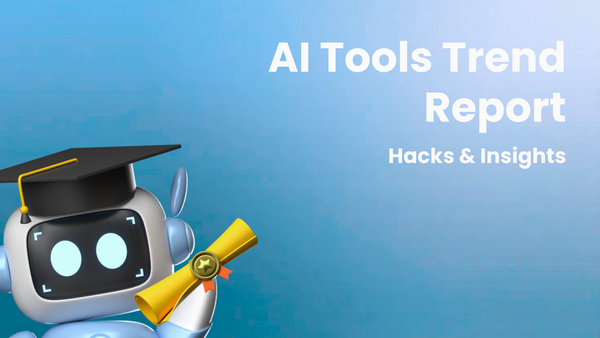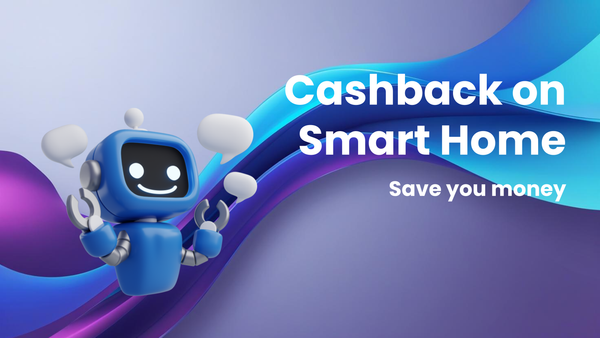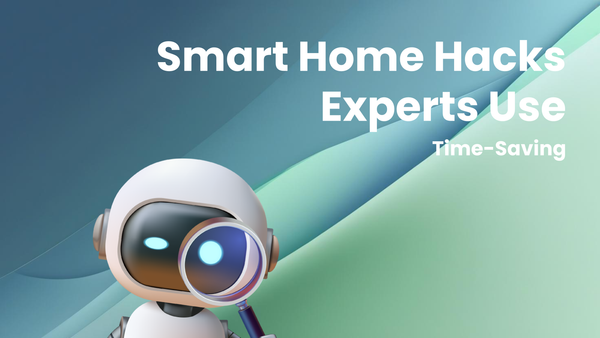AI Tutor Tier Comparison: What Influences Buyer Decisions?

AI Tutor Tier Comparison: What Influences Buyer Decisions?
Imagine a world where every student has a personalized, tireless tutor available 24/7. That's the promise of AI tutors, but the reality is more nuanced. Many people assume all AI tutors are created equal, offering similar features and benefits. This couldn't be further from the truth. The market is fragmented, with tiers ranging from basic homework help to sophisticated, adaptive learning platforms. Understanding these tiers and the factors influencing buyer decisions is crucial for educators, parents, and students alike.
This article will dissect the complex landscape of AI tutors, exploring the different tiers available and the key elements that shape buyer decisions. We'll delve into the functionalities, costs, and pedagogical approaches behind each tier, equipping you with the knowledge to make informed choices. Prepare to gain a deeper understanding of how AI is reshaping education and what factors truly matter when selecting the right AI tutor.
Understanding the AI Tutor Landscape: From Basic Help to Personalized Learning
The term "AI tutor" encompasses a broad spectrum of technologies. To navigate this complex market, it's helpful to categorize AI tutors into distinct tiers based on their capabilities and underlying technology:
- Tier 1: Basic Homework Helpers: These are the entry-level AI tools, often built around natural language processing (NLP). They primarily focus on providing answers to specific questions, offering explanations, and assisting with basic problem-solving. Think of them as enhanced search engines specifically tailored for educational content.
- Tier 2: Adaptive Practice Platforms: These platforms leverage adaptive learning algorithms to personalize the learning experience. They assess a student's current knowledge level and adjust the difficulty of practice questions accordingly. The goal is to identify areas where the student needs more support and provide targeted practice.
- Tier 3: Comprehensive AI Tutors: These represent the most advanced tier, incorporating a wider range of AI techniques, including machine learning, knowledge representation, and intelligent tutoring systems. They offer personalized learning paths, adaptive content, and real-time feedback. They aim to simulate the experience of a human tutor more closely.
The rise of AI tutors is driven by several factors: increasing access to technology, the growing demand for personalized learning, and the desire to address the limitations of traditional classroom settings. They offer the potential to provide individualized support, cater to different learning styles, and bridge the achievement gap.
Deep Dive: Unpacking the Functionality and Underlying Mechanisms
Let's examine each tier in more detail to understand how they work and what sets them apart:
Tier 1: Basic Homework Helpers
- Functionality: These tools primarily rely on NLP to understand student questions and retrieve relevant information from a vast database of educational resources. They can often provide step-by-step solutions, definitions, and explanations.
- Mechanism: They work by analyzing the student's query, identifying keywords, and searching for matching content in their knowledge base. Some may use pattern recognition to identify the type of problem and retrieve a corresponding solution template.
- Example: Consider a student struggling with a math problem: "Solve for x: 2x + 5 = 11." A Tier 1 AI tutor would use NLP to identify the key elements of the equation and retrieve the steps required to solve for x. It would then present the solution in a clear and concise manner.
- Limitations: They often struggle with complex or nuanced questions that require critical thinking or deeper understanding of the underlying concepts. They also lack the ability to provide personalized feedback or adapt to the student's individual learning style.
Tier 2: Adaptive Practice Platforms
- Functionality: These platforms focus on providing personalized practice opportunities based on the student's performance. They use adaptive learning algorithms to adjust the difficulty of questions in real-time.
- Mechanism: They typically start with an initial assessment to gauge the student's baseline knowledge. Based on the student's responses, the algorithm adjusts the difficulty of subsequent questions. If the student answers correctly, the difficulty increases; if they answer incorrectly, the difficulty decreases.
- Example: Imagine a student practicing algebra. The platform might start with basic equation solving. If the student consistently answers correctly, it will introduce more challenging problems involving inequalities or systems of equations. Conversely, if the student struggles, it will revert to simpler problems and provide additional support.
- Benefits: Adaptive practice platforms can help students identify their strengths and weaknesses, focus on areas where they need the most help, and track their progress over time. They also provide a more engaging and motivating learning experience compared to traditional rote memorization.
- Challenges: The effectiveness of adaptive practice platforms depends on the quality of the underlying algorithms and the accuracy of the initial assessment. They can also be limited in their ability to provide personalized feedback or address conceptual misunderstandings.
Tier 3: Comprehensive AI Tutors
- Functionality: These represent the most advanced AI tutors, offering a comprehensive learning experience that combines personalized content, adaptive practice, and real-time feedback. They aim to simulate the interactions of a human tutor.
- Mechanism: These tutors use a combination of AI techniques, including machine learning, knowledge representation, and intelligent tutoring systems. They create a model of the student's knowledge and skills and use this model to personalize the learning path. They can also provide personalized feedback, identify misconceptions, and adapt their teaching strategies in real-time.
- Example: Consider a student learning about the American Civil War. The AI tutor might start by assessing the student's prior knowledge of the topic. Based on the assessment, it would create a personalized learning path that covers the key events, figures, and causes of the war. As the student progresses, the tutor would provide interactive simulations, quizzes, and discussions to reinforce their understanding.
- Benefits: Comprehensive AI tutors offer the potential to provide a highly personalized and effective learning experience. They can adapt to the student's individual learning style, provide targeted feedback, and address conceptual misunderstandings. They also have the potential to reduce the workload on teachers by automating tasks such as grading and lesson planning.
- Limitations: Comprehensive AI tutors are still in their early stages of development. They can be expensive to develop and implement, and they require a significant amount of data to train effectively. They also raise ethical concerns about bias, fairness, and the potential for over-reliance on technology.
Influencing Factors: What Drives Buyer Decisions?
Several key factors influence buyer decisions when it comes to selecting an AI tutor. These factors can be broadly categorized into:
- Cost: The price of AI tutors varies widely depending on the tier and the features offered. Basic homework helpers are often free or low-cost, while comprehensive AI tutors can be quite expensive. Budget constraints are a major factor for many buyers.
- Functionality: Buyers carefully evaluate the features and functionality of AI tutors to determine if they meet their specific needs. Factors such as personalized learning, adaptive practice, real-time feedback, and content coverage are all considered.
- Effectiveness: Buyers want to know if the AI tutor is effective at improving student learning outcomes. They often look for evidence of efficacy, such as research studies, testimonials, and case studies.
- Ease of Use: The ease of use of the AI tutor is also an important consideration. Buyers want a platform that is intuitive and user-friendly, both for students and teachers.
- Integration: Buyers may also consider how well the AI tutor integrates with existing learning management systems (LMS) and other educational tools.
- Reputation and Trust: The reputation and trustworthiness of the AI tutor provider are also important factors. Buyers often look for established companies with a proven track record of success.
Real-World Example: A school district considering implementing AI tutors to support struggling students might prioritize cost and ease of use. They might opt for a Tier 2 adaptive practice platform that provides personalized practice opportunities in math and reading. On the other hand, a parent seeking to provide their child with a highly personalized learning experience might be willing to invest in a Tier 3 comprehensive AI tutor.
Debates and Considerations: Navigating the Pros and Cons
The use of AI tutors in education is not without its critics. Some common debates and considerations include:
- The "Black Box" Problem: Some AI algorithms are so complex that it's difficult to understand how they arrive at their decisions. This lack of transparency can raise concerns about bias and fairness.
- Data Privacy and Security: AI tutors collect vast amounts of data about students, raising concerns about data privacy and security. It's important to ensure that this data is protected and used responsibly.
- The Role of Teachers: Some educators worry that AI tutors will replace teachers. However, most experts believe that AI tutors should be used to augment, not replace, teachers.
- Equity and Access: AI tutors can be expensive, which could exacerbate existing inequalities in education. It's important to ensure that all students have access to these tools, regardless of their socioeconomic background.
- Over-Reliance on Technology: There is a risk that students could become overly reliant on AI tutors and lose the ability to think critically and solve problems independently. It's important to encourage students to use AI tutors as a tool, not as a crutch.
Addressing the Concerns: To mitigate these concerns, it's crucial to prioritize transparency, data privacy, and equity. Developers should strive to create AI algorithms that are explainable and free from bias. Policymakers should ensure that all students have access to AI tutors and that these tools are used responsibly. Furthermore, it is critical to clearly define the role that AI tutors should play in supporting and empowering teachers, not replacing them.
Actionable Guide: Choosing the Right AI Tutor for Your Needs
Choosing the right AI tutor can be a daunting task. Here's a step-by-step guide to help you navigate the process:
- Identify Your Needs: What are your specific learning goals? What subjects do you need help with? What is your budget?
- Research Different Options: Explore the different tiers of AI tutors and read reviews from other users.
- Try Before You Buy: Many AI tutor providers offer free trials or demos. Take advantage of these opportunities to test out different platforms and see which one works best for you.
- Consider the Features: Evaluate the features of each AI tutor and determine which ones are most important to you.
- Read the Fine Print: Pay attention to the terms of service, privacy policy, and refund policy.
- Talk to Others: Seek advice from teachers, parents, and other students who have used AI tutors.
Common Pitfalls to Avoid:
- Falling for the Hype: Be wary of marketing claims that seem too good to be true.
- Ignoring the Fine Print: Make sure you understand the terms of service and privacy policy before signing up.
- Overspending: Don't spend more than you can afford.
- Assuming All AI Tutors Are Created Equal: Do your research and choose an AI tutor that meets your specific needs.
- Neglecting Human Interaction: Remember that AI tutors should augment, not replace, human teachers.
Conclusion: The Future of Learning with AI
AI tutors have the potential to revolutionize education by providing personalized, adaptive, and accessible learning experiences. By understanding the different tiers of AI tutors and the factors that influence buyer decisions, educators, parents, and students can make informed choices about how to leverage this technology to improve learning outcomes.
The journey of AI in education is just beginning. As AI technology continues to evolve, we can expect to see even more sophisticated and personalized learning tools emerge. The key is to approach these tools with a critical and informed mindset, ensuring that they are used responsibly and ethically to empower learners and enhance the overall educational experience.
Now, take some time to reflect on your own learning needs and explore the different AI tutor options available. Consider what you value most in a learning experience and how AI can help you achieve your goals. Whether you're a student, a parent, or an educator, the future of learning is in your hands.




